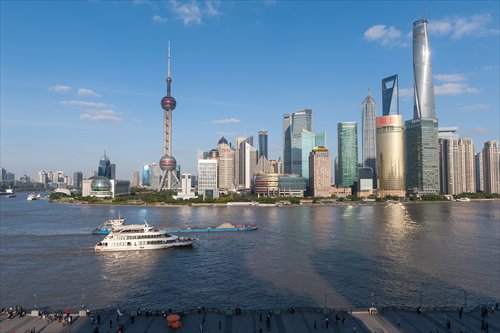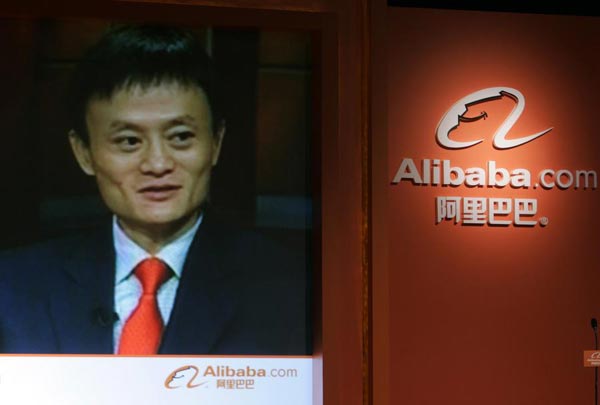China still lacking in innovation — Nikkei Asian Review
–
China still lacking in innovation
January 23, 2015 1:00 pm JST
By Peter Fuhrman
China’s economy suffers from an acute case of “not invented here” syndrome. Everything can be, and increasingly is, manufactured in China, but almost nothing of value is invented here.
The result is an economy still centered on low-pay, low-margin drudge work manufacturing products designed, patented and marketed by others. This is as true for advanced medical diagnostic equipment from General Electric as it is for Apple’s iPhones and tablets.
While manufacturing accounts for almost 50% of China’s gross domestic product and keeps 100 million people employed, China has few if any domestic companies selling sophisticated, premium-priced manufactured products to the world. As long as this remains the case and China remains a huge economy with only the tiniest sliver of consequential and profitable innovation, it will grow harder each year for the country to sustain high economic growth rates and big increases in living standards.
The government is increasingly anxious. “China is now standing at a critical stage in that its economic growth must be driven by innovation,” warned the State Council, China’s cabinet, in May.
With the talk comes money. Lots of it. Billions of dollars are being allocated to government-backed research projects and venture capital. But for all the rhetoric, government policies and cash, China remains a high-tech disappointment, more dud than ascending rocket. As an investment banker living and running a business in China, I very much wish it were otherwise. But I still see no concrete evidence of a major change underway.
On others’ shoulders
Indeed, the flagship products of China’s advanced manufacturing sector are still built largely on foreign components, technologies and systems, with Chinese factories serving as the assembly point.
Consider Xiaomi, which achieved great success in China’s mobile phone market last year and began getting some traction overseas. The company now has a market valuation of $45 billion, far higher than Sony, Toshiba, Philips, Ericsson and many more of the world’s most famous innovators.
Xiaomi’s handsets rely on components and software from a group of mainly U.S. companies, including Broadcom, Qualcomm and Google. They, along with U.K. chipmaker ARM Holdings and foreign screen manufacturers, are the ones making the real money on Android phones like Xiaomi’s.
Many of Xiaomi’s phones, like those of Apple and other leading brands, are assembled in China by Hon Hai Precision Industry, a Taiwanese company better known as Foxconn. As of now, Foxconn has no Chinese competitor that can match its production quality at a comparable low cost. Its superior management systems for high-volume production underscore another critical area where China’s domestic technology industry is weak.
The picture is similar with products such as computers, cars and aircraft. China’s military and commercial jet development programs have relied on foreign engines because of the country’s continuing failure to design and produce its own. Compare this with the Soviet Union, which, though an economic also-ran all the way up to its extinction in 1991, was producing jet engines as early as the 1950s; Russia still supplies advanced military engines for Chinese military jets. The picture is little better with jet brakes and advanced radar systems.
Stumbling blocks in China’s jet engine development continue at the manufacturing level with difficulties in serial production of minute-tolerance machinery, at the materials level with a lack of special alloys, and at the industrial level where a state-owned monopoly producer faces no local competitor to drive innovation as has been seen in the dynamic in the U.S. between GE and Pratt & Whitney.
China’s inability to make its own advanced jet engines casts light on problems China has, and likely will continue to have, developing a globally competitive indigenous technology base. This challenge, to bring all the parts together in a high-tech manufacturing project, is also evident in China’s failure, up to now, to develop and sell domestically developed advanced integrated circuits, pharmaceuticals and new materials globally.
China has, by some estimates, spent more than $10 billion on pharmaceutical research, but it has had only one domestically developed drug accepted in the global market, the modestly successful anti-malarial treatment artemisinin, or qinghaosu. Interestingly, it is derived from an herbal medicine used for 2,000 years in China to treat malaria; the drug was first synthesized by Chinese researchers in 1972.
Missing pieces
It’s simply not enough to count Chinese engineers and patents, or to rely on the content of the government’s technology-promoting policies. China still lacks so many of the basic building blocks of high-tech development, such as a mature, experienced venture capital industry staffed by professional entrepreneurs and technologists. A transparent judicial system is also essential, not only for protecting patents and other intellectual property, but for managing the contractual process that allows companies to put money at risk over long periods to achieve a return. Nondisclosure and noncompete agreements, a backbone of the technology industry in the U.S. and elsewhere, are basically unenforceable in China.
Tencent Holdings’ WeChat mobile messaging service is an example frequently cited by those who claim to see a dawning of innovation in China. An impressive 400 million phone users have signed up for the service. The basic application, though, is similar to that of Facebook’s WhatsApp, Japan’s Line and others.
WeChat’s real technological strength is in its back end, in building and managing the servers to store all the content that is sent across the network, including a huge amount of video and audio files. Tencent does this because it’s required to do so by Chinese internet rules and government policies on monitoring Internet content. Tencent might be able to commercialize and sell its backend storage architecture globally, but it’s not clear anyone would be interested in buying it. It’s a technology that evolved from specific Chinese requirements, not market demand.
China’s record of invention is the stuff of history: gunpowder, the compass, paper, oil wells, porcelain, even alcoholic beverages, kites and the fishing reel. All that occurred over 1,000 years ago. China’s greatest modern invention has been its singular pathway out of poverty as the economy expanded 200-fold over the last 35 years. But growth is now slowing, costs are rising sharply and profit margins are shrinking. To go on prospering, China needs to invent a new path and discover a new wellspring of breakthrough innovation, and it needs to do so in a hurry.
Peter Fuhrman is the founder, chairman and chief executive of China First Capital, an investment bank based in Shenzhen, China.
http://asia.nikkei.com/Viewpoints/Perspectives/China-still-lacking-in-innovation
–


























